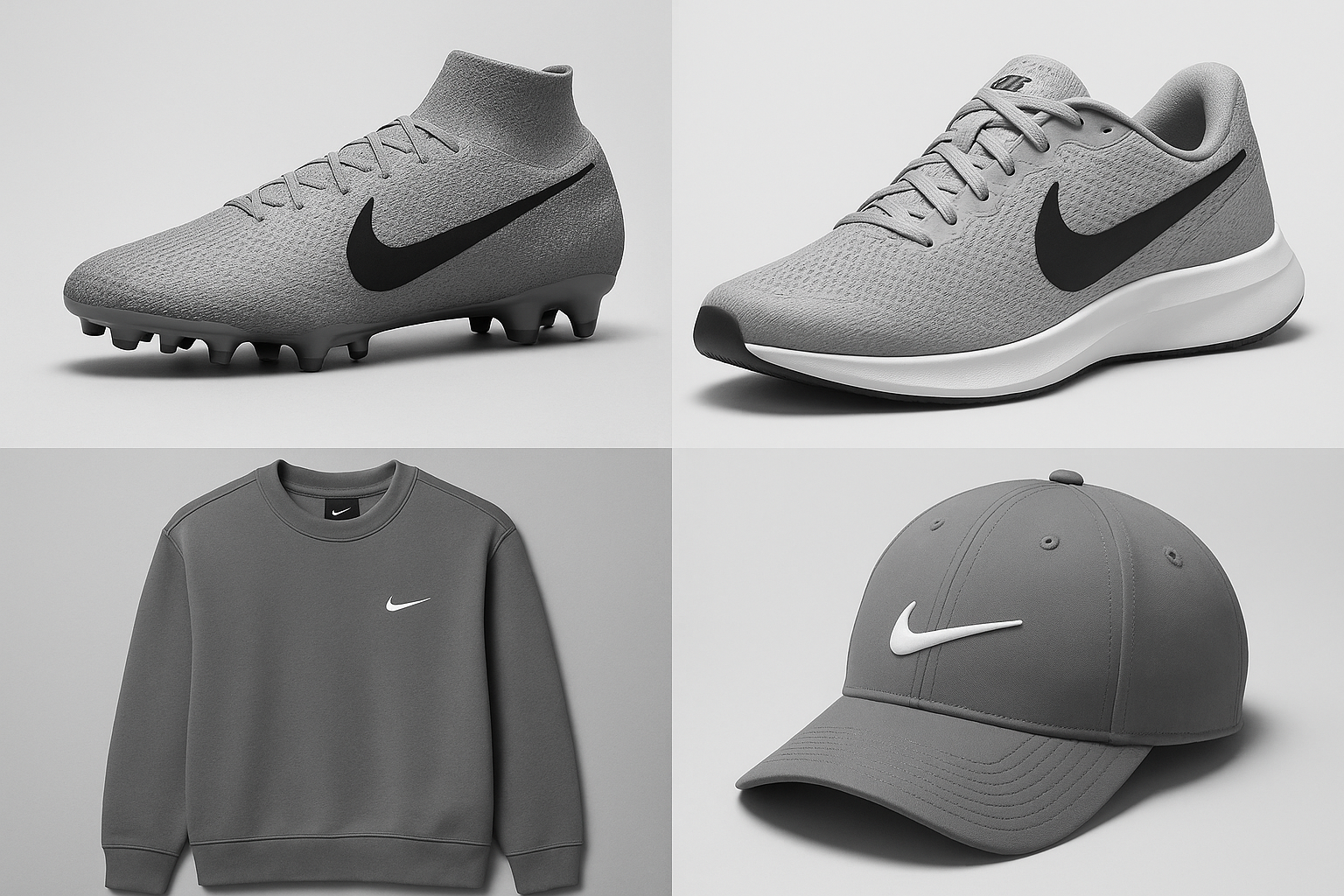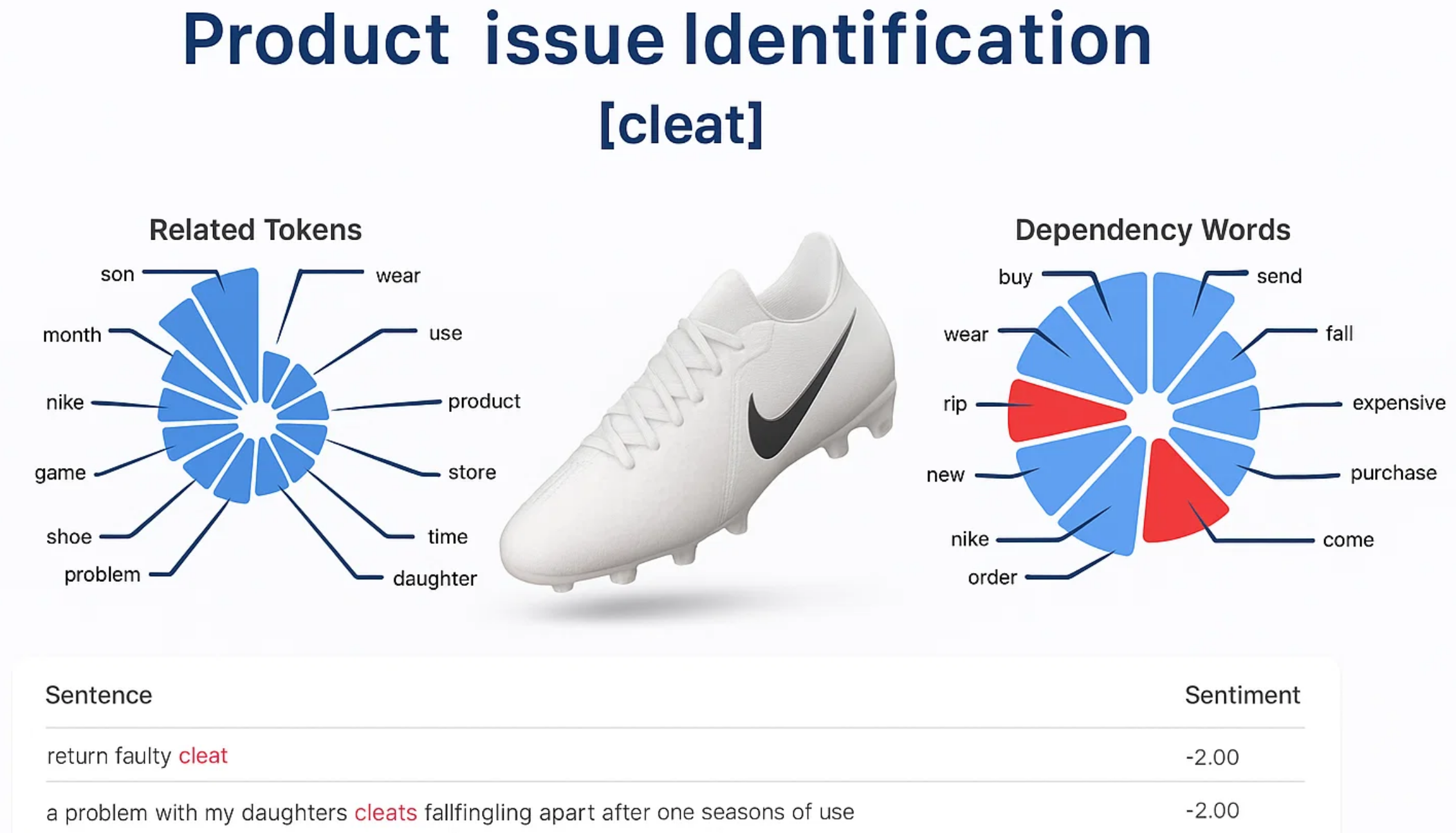Voice of the Customer & Product Intelligence at Scale
Transforming raw chat transcripts, feedback forms, and support logs into predictive insights that drive strategic action at Nike through advanced NLP and sentiment analysis.

Voice of the Customer & Product Intelligence at Scale
Powered by On Beat Digital | In Partnership with Nike
Client: Nike
Industry: Athletic Footwear & Apparel | Consumer Goods | Sports
Technologies: NLP, Sentiment Analysis, Token Mapping, Dependency Parsing, Executive Dashboards
Voice of Customer Analytics Platform
Real-time sentiment analysis and text analytics dashboard showing Nike's customer feedback insights

Overview
Nike partnered with On Beat Digital to harness the untapped power of Voice of the Customer (VOC) data—transforming raw chat transcripts, feedback forms, and support logs into predictive insights that drive strategic action.
This engagement focused on converting unstructured customer language into structured intelligence, surfacing critical signals around:
- Brand preference and product loyalty
- Hidden defect trends
- Emerging market opportunities
- And most notably, the behavioral patterns of Nike's most influential buyer group: parents
The result was a first-of-its-kind customer intelligence system that now shapes Nike's marketing, product development, and CX strategy with real-time data at its core.
Project Objectives
Methodology
1. Data Ingestion & Cleansing
We ingested unstructured customer feedback from:
- Chat transcripts
- Support tickets
- Contact forms
- Product reviews
This data was cleaned, tokenized, and enriched with user context, sentiment markers, and product metadata to support downstream analysis.
2. Token + Dependency Mapping
Every product mention was mapped to:
- Related Tokens (e.g., "season," "pair," "game" for cleats)
- Dependency Words (e.g., "break," "return," "fall apart")
We then visualized token clusters and their linguistic dependencies to highlight which product types generated negative feedback and what users expected.
3. Sentiment Scoring + Executive Translation
Sentences were scored and color-coded using NLP-based sentiment modeling. Each was also paraphrased for executive use:
"Some buy for Curry. Some buy for LeBron. Everyone buys for Jordan."
4. Trend Forecasting
Using frequency modeling and co-occurrence analysis, we detected:
- A 10–20% quarterly increase in "bring back" / retro product requests
- Strong patterns showing parental preference over athlete affiliation
- Emerging interest in non-traditional sports like dance in VOC data
Key Findings
Behavioral & Brand Insights
Product Defect Identification (Cleat Example)
"Cleat" surfaced as the most sentiment-negative term in customization feedback
- Top dependency words: "break," "return," "fall apart"
- Sentiment score: -2.0 to -1.35 across contact and comment columns
- Insights delivered before traditional product review signals surfaced publicly
Sample VOC Input:
"My daughter's cleats fell apart after one season."
Result: Product flagged, issue escalated, resolution tracked within the pipeline.
The Technical Framework
Business Impact
Early Detection
Surfaced product-level issues months earlier than traditional review cycles
Marketing Repositioning
Helped reposition Nike's marketing messages to parents, not influencers
Product Validation
Validated retro product demand through data-backed forecasting
New Opportunities
Identified new product opportunities based on emerging sports (e.g., dance, cheer)
Scalable Foundation
Set the stage for long-term, scalable VOC monitoring across all Nike digital touchpoints
Technologies Used
Conclusion
This initiative marked a turning point for Nike's approach to VOC: no longer passive listening, but predictive intelligence.
Through structured NLP, real-time sentiment modeling, and dependency mapping, Nike now has a living feedback loop—one that drives faster response, deeper insights, and smarter decisions.
Nike now shapes its marketing, product development, and customer experience strategy with real-time, predictive customer intelligence at its core.
Ready to Transform Your Customer Intelligence?
Let us help you unlock the predictive power hidden in your customer feedback and voice data.
Start Your VOC Project View More Case Studies